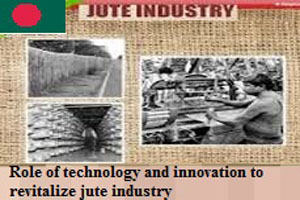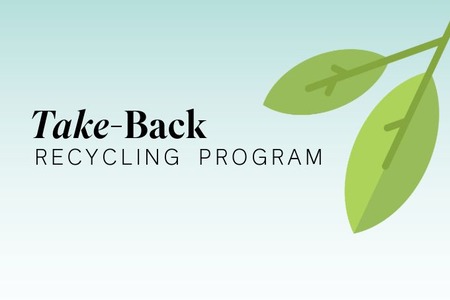
Role of technology and innovation to revitalize jute industry
YarnsandFibers News Bureau 2017-02-13 14:00:00 – DhakaBangladesh government has taken a large project to upgrade production technology of jute mills under $350 million foreign loan due to continued erosion of competitiveness of jute mills in the country. Domestic market is the key to enable local technology value addition capacity to grow.
Bangladesh's industrial policy of balancing, modernizing, rehabilitating and expanding (BMRE) with 100 percent import of foreign capital machinery is highly detrimental to the growth of local technology value addition capacity.
State-owned jute mills are one of the key areas to support the growth of technology value addition in capital machinery. In the absence of building the capacity of technology value addition to capital machinery, Bangladesh's dream of becoming middle-income country will likely remain unmet.
However, instead of giving subsidy and blaming the market, it's time to focus on continuous improvement of quality and reduction of cost by taking the advantage from product and process innovations, gained from on-job learning, emerging technology and local innovation capacity.
The solutions have been waiving bank interest, giving cash subsidy, providing additional loan, importing technology, and imposing duty on raw jute export to force farmers sell their produce at low price.
Despite the availability of the cheapest manufacturing labour, locally grown raw material, and growing global consciousness of environment, it has been reported that in the recent past around 20 jute mills were shut down. Twenty-five out of 97 jute spinning mills are already closed. Even 21 jute mills out of 35 that were privatised before are now closed. Moreover, operational jute mills are now running at less than 50 percent capacity.
Whenever the situation reaches to crisis level, the government comes up with projects to shoulder the liability. Like in the past, the ministry has come up with Tk 7.0 billion project in the name of manufacturing diversified products, and $350 million for technology upgradation with import.
But the root cause of ill health of the jute goods manufacturing sector appears to be at the culture and core belief. The conventional belief is that mills will be producing conventional products with the available imported technology and labour. If consumers do not respond to buy those products resulting in losses, the government will come up with subsidy to cover up the loss. Instead of focusing on quality and cost of production, the strategy has been the best effort outputs, expecting that market will respond to produce profitable revenue.
In the globally connected industrial economy, success does not just rely on the best effort delivery. Rather, conscious steps to produce outputs of higher quality at lower cost are the key to success. In the absence of such core competence, even being blessed with natural advantages, Bangladesh's jute industry has been withering.
Instead of blaming the market, it's time to draw lesson from other segments of the industrial economy to bring a change in the core culture of jute goods production. The historic low price of petroleum products is due to the fact that with the aid of technology breakthrough known as hydraulic fracture, oil companies are producing more oil from the same reservoirs at lower cost than ever before.
Instead of blaming the market and taking one after another mega subsidy projects in the name of BMRE or product diversification, it's time to perform an audit on the jute manufacturing sector to assess its progress over the last three decades in two key performance indicators: quality and cost.
It's time to focus on the root cause of stagnant or decaying quality and rising costs due to the failure to take advantage from learning and local innovation to address the chronic ill health of jute manufacturing sector. Such approach will also create high-paying jobs for the growing number of science and engineering graduates - the key area to focus on for avoiding premature income saturation and deindustrialisation.
Turning on-the-job learning into improvement of quality and reduction of cost through product and process innovation is the core competence to succeed in industrial economy.
Market Intelligence
Ask for free sample Report

experience
Customer Base
dedicated team
Countries Served Worldwide









